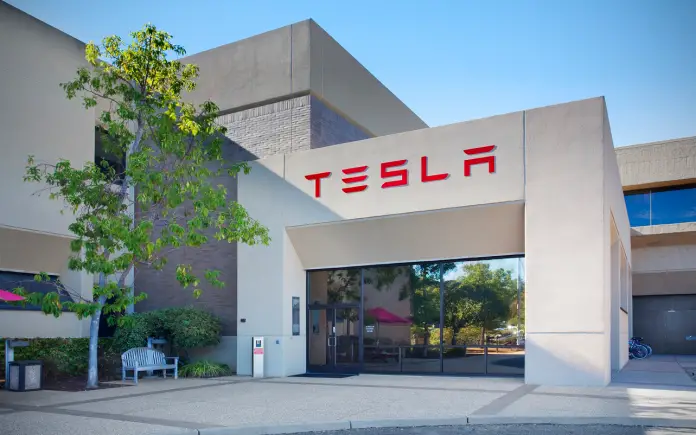When you hear about electric vehicles (EVs), the first thing you think of is Tesla. Whether you are a fan of Tesla or electric vehicles, in any case it is this small car maker that has changed the market for electric vehicles.
Few people know that electric cars were the first cars ever, only to be followed by internal combustion engine cars. However, in the early 19th century, when the first electric cars appeared, the electric batteries were still too weak to provide sufficient driving range.
It was then that the idea of electric cars was abandoned, and the concepts and electric cars that emerged could not compete with the more comfortable, beautiful and popular cars with internal combustion engines.
And only at the beginning of the 21 st century electric cars reborn. And of course, a big role in this was played by the company Tesla and its cars. It may sound too banal, but if to trace the whole way of formation of the Tesla brand from far 2003 up to the present day, it would be clear that spectacular and productive sedans appeared largely due to belief in the dream and adherence to the goal.
The beginning of Tesla: The initial idea
gain, this will sound trite, but as with any major success story, a lot depends on personalities. And no, I’m not talking about Elon Musk, I’m talking about the other two guys.
Behind every successful and breakthrough project is one or more bright individuals who believed in their idea and went after the goal. However, let’s go over everything in order.
In the early 2000s, divorced engineer and Silicon Valley resident Martin Eberhard wanted to buy a sports car. Since Martin was interested in ecology and environmental issues, he thought about the eco-friendliness of his future purchase. And that’s when he realized there was virtually no choice. Electric cars were more environmentally friendly, but it was almost impossible to buy a real electric car that was as good as a real car, because there were only a few models on the market that looked more like golf carts, but not real cars.
They were compact, oddly designed, and had little range. For someone who wanted a true car it looked ridiculous.
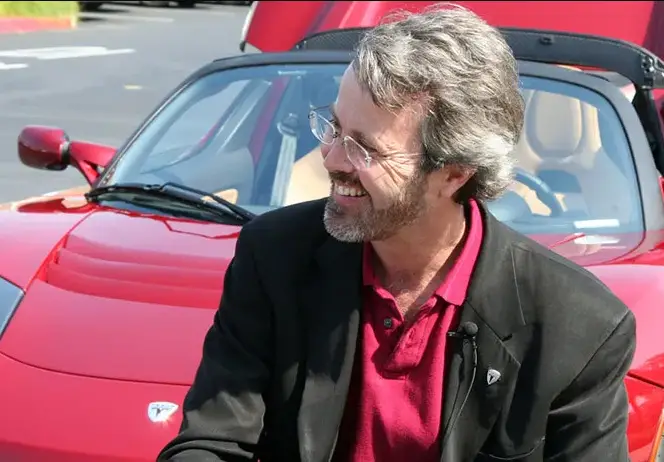
Choosing from the electric cars of the time, there was only one electric car that wouldn’t be much inferior to internal combustion engine cars – the body-mounted AC Propulsion tzero.
This electric car drove silently, had about 200 horsepower, and produced no emissions. But more importantly, it looked like a nice car, and the futuristic design emphasized that it wasn’t a common car.
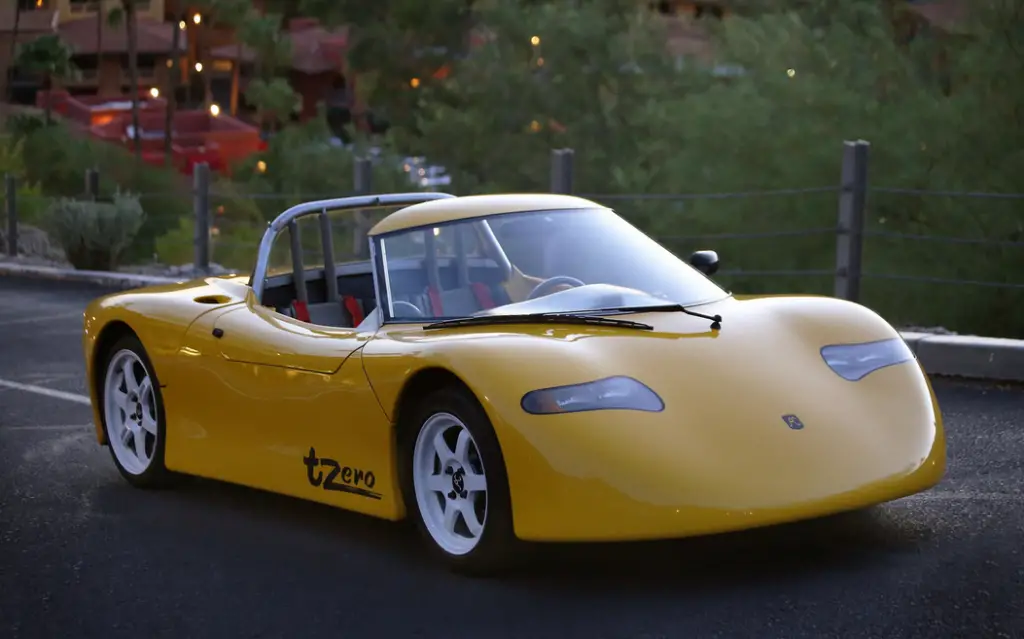
The main problem of this car was that it used a lead-acid battery, which was characterized by high weight and poor energy capacity. And yet, even such a battery provided about 100 miles (160 km) of range, and it was 90% charged in one hour.
The AC Propulsion tzero cost about $80,000 and that was a fair enough price for what you were getting.
However, Eberhard was lucky enough to get a test specimen with a lithium-ion battery. It was lighter and accelerated faster.
Moreover, thanks to the lithium-ion battery, the car had a much better range, about 300 miles (480 km). The only problem was that it was incomparably more expensive – $220,000, a lot of money even for a futuristic car.
Founding of Tesla Motors
Eberhard drove the AC Propulsion tzero for about three months, but then he wanted something more. So, in 2003, together with his companion, programmer Marс Tarpenning, Eberhard decided to create his own electric car project. By the way, both founders had no experience in the automotive industry.
And on July 1, 2003, Tesla Motors was founded. The company was named after Nikola Tesla, the Serbian scientist, and inventor. A little later, the company got its own logo designed by RO Studio. The logo not only resembles the letter T but also looks like a section of an electric motor in cross-section.
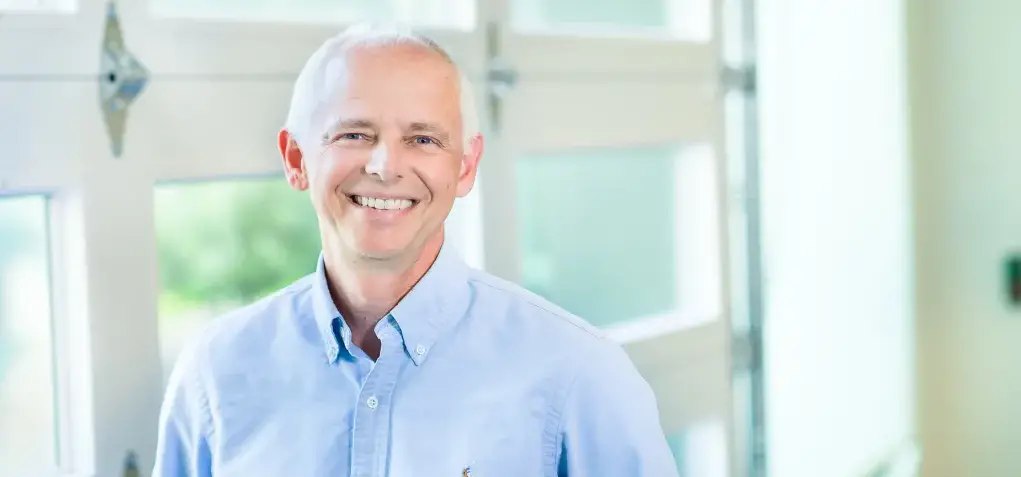
For the development of the prototype, it was decided to use the Lotus Elise, the insides of which were freed from all the stuffing and filled with an electric motor.
Despite the fact that the prototype turned out to be very successful, serial production of the electric car required significant investments, which Eberhard and Tarpenning simply didn’t have. The problem was that potential investors were skeptical about electric cars.
The early 2000s was the heyday of the internal combustion engine car market, so despite the good concept, investors didn’t believe it could become a commercial success. The main problem from the perspective of potential investors was the use of an electric motor, which although it produced 10 times fewer emissions and was six times more energy-efficient, was incomprehensible to the mass consumer.
So the two co-founders of Tesla Motors faced an obvious problem – they simply could not find investors who were willing to invest in this breakthrough technology. Tesla Motors didn’t just need money, the company needed to find an investor willing to invest in the concept, which promised to be a breakthrough technology, but could also fail like many electric cars before.
In the spring of 2004, the companions met with Elon Musk. The meeting was scheduled for 30 minutes, but they chatted for over 2 hours. Now, looking back, it is safe to say that it was during that meeting and emerged the future of the entire industry of electric cars.
Elon Musk joins Tesla Motors
After meeting with the co-founders, Elon Musk was impressed with their idea and decided to invest in Tesla Motors.
The main thing that had changed since the other electric cars was the approach. According to the plan of Tesla Motors, their car had to be not just an electric sports car, but a disruptive technology that had to completely change the positioning of electric cars in the market. Acceleration to 100 km in less than 4 seconds, no air emissions, equivalent consumption of 11 gallons (42.5 liters) per 100 km, and very infrequent maintenance (once per 100,000 miles/160,000 km not including tires).
Elon Musk invested $7.5 million and became the Chairman of Tesla Motors. On April 23, 2004, the company settled all formalities, including an agreement with two major partners: Lotus Engineering (which provided car body to build the new Tesla) and AC Propulsion (which provided the technology background).
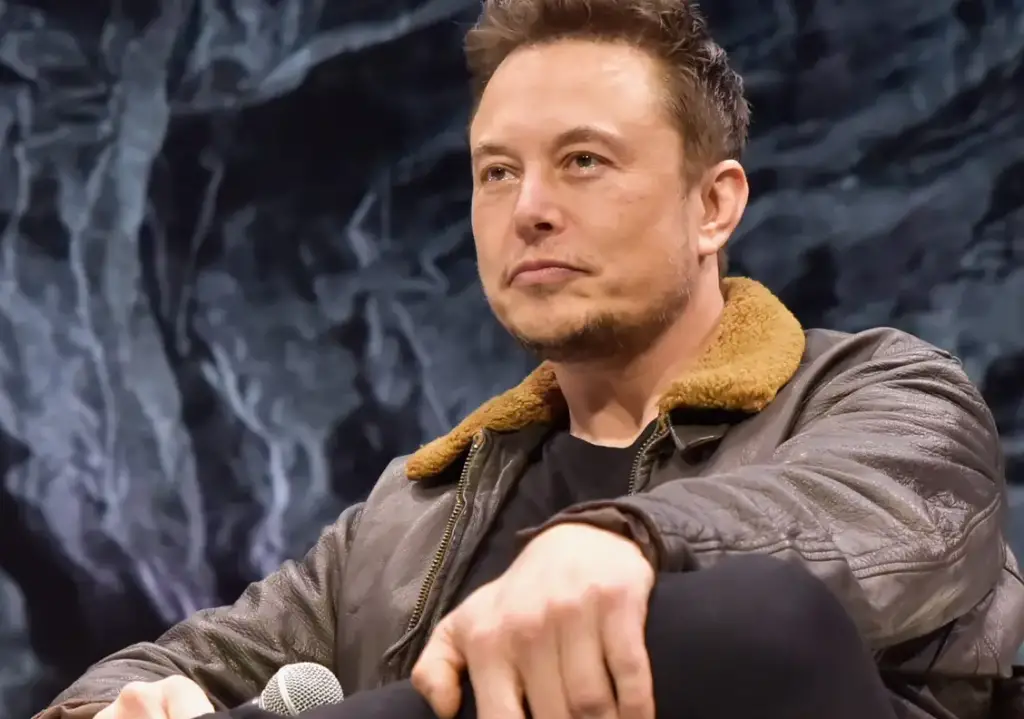
Tesla Roadster: From design to the concept
The first serious problem the company faced was the design of the car. None of the Tesla co-founders, as well as Elon Musk, had any experience in the automotive industry. So their design was too ridiculous and did not look like something disruptive.
However, after Eberhard approached Bill Moggridge, owner of IDEO and an industrial design specialist. He helped decide on future designs and suggested several options. And even though the company eventually chose the design proposed by Barney Hutt, it was Moggridge who helped the company to choose the right direction in the development of future car design.
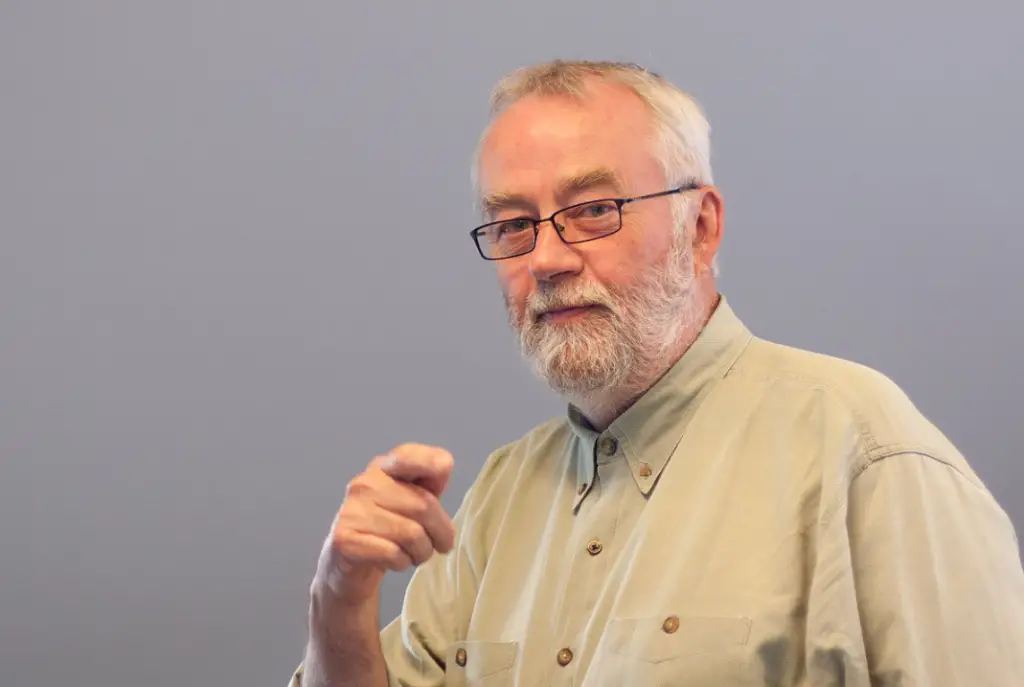
After that, the company managed to succeed, and already in November 2004 was presented the first Tesla Roadster concept. At that time it was still Elise but fully equipped with electronic stuffing from Tesla Motors. The car got electronic control systems, an innovative engine, and improved batteries.
Of course, in reality, the concept still wasn’t a car for the mass market, as it lacked external panels. But the main goal of engineers was to present a working electric vehicle, which could help attract further investment. Certainly, the first concept was a success that helped Tesla raise an additional $13 million in investment.
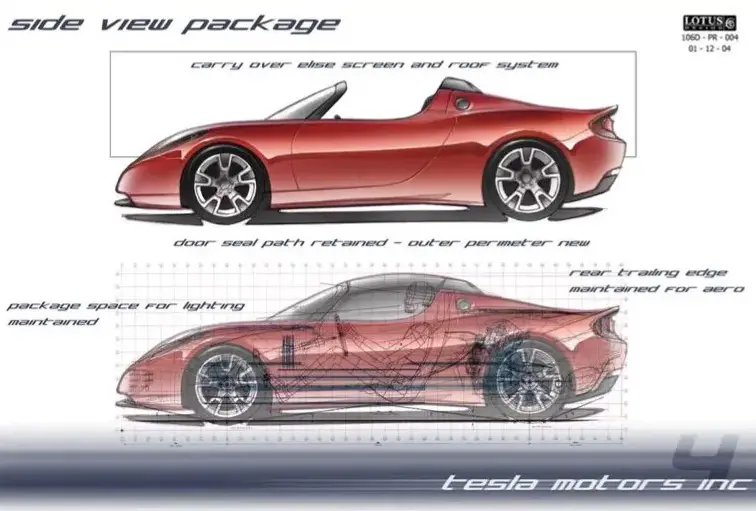
Up until 2006, when it came to the production of the first models, Elon Musk constantly monitored every stage of production. Despite the fact that none of the key persons had any experience in the car industry. At first, everything was okay, and all technical solutions were developed by the company’s specialists under Elon Musk’s control.
First public presentation: The overhelming success
By 2006 Tesla decided to hold its first public presentation. The first presentation of the Tesla Roadster was held on July 19, 2006 at the Barker Hangar Entertainment Center (territorially at the Santa Monica Airport). The company showed the electric car in all its glory, and at the presentation were Hollywood stars and other people from high industries.
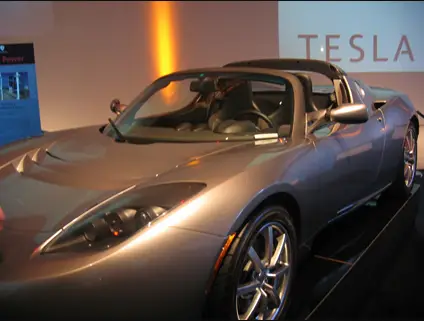
Of course, the presentation did not do without force majeure; towards the end of the event, the engines located in the back of the cars broke off their mounts and began to hit the car’s body, but only Tesla Motors engineers noticed the malfunction. The guests of the presentation weren’t aware of such features, so they didn’t notice anything.
During the presentation, anyone who wanted to buy a Tesla Roadster could do so at a special price for the first 100 cars ($100,000). For this money, the buyer received not just a new electric car, but also the autographs of the three founders right on the panel of the new car. It was a success, because even Arnold Schwarzenegger, who was governor of California at the time, bought the Tesla Roadster.
What’s more, everyone who was in a first hundred pre-orders received a Tesla Signature One Hundred certificate, which recorded that the person was a Tesla Motors customer in the first hundred.
This presentation was a definite success because inviting many famous and respected people allowed Tesla Motors to start an active media campaign in order to create a lot of hype around the company. In the first two weeks alone, the company got 127 pre-orders for its cars.
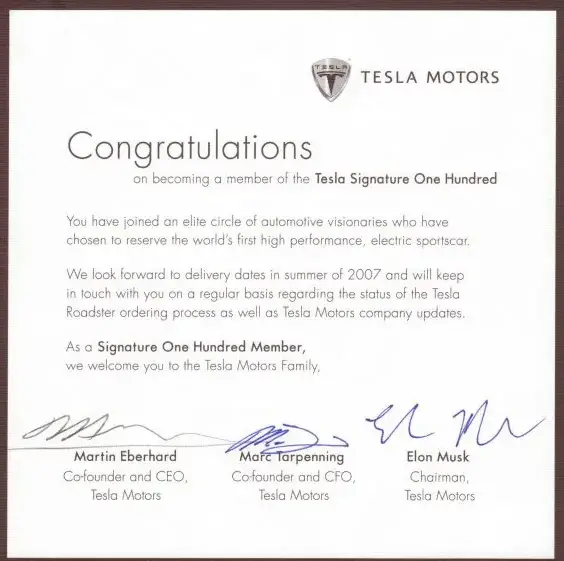
First Failures
Tesla Motors had very ambitious plans. In particular, the company planned to start making the first mass-market cars by the end of 2006. And already by 2007, the company planned to start producing up to 500 cars per year. The reaching of profitability point was planned for the second half of 2008. However, the company faced a heap of problems.
The company was run by people who had no experience in the automotive industry. They couldn’t manage a large team of engineers, couldn’t conduct financial affairs correctly, and didn’t understand all the subtleties of the industry.
Moreover, Elon Musk was very insistent on quality and believed that Tesla cars should be perfect in its terms.
For example, Musk insisted that the threshold be lowered, which meant the body parameters had to be completely changed. In addition, he felt that the dashboard would need to be improved and the seats replaced with more comfortable ones.
It was during this period that Eberhard stepped down as CEO and handed the post over to more professional managers. And since that time Musk moved from a Chairman to CEO position and started to play 1st role.
Tesla is skyrocketing
Soon Musk visited London to assess the progress of the Tesla Roadster. At this point there were a lot of problems. Lotus Engineering found about 940 problems with the Tesla Roadster. By the time of Elon Musk’s visit, the company was able to solve only 94 of them.
It was a moment of enormous pressure because Martin Eberhard had to become CTO and Michael Marks (who was previously CEO of Flextronics) took over as CEO.
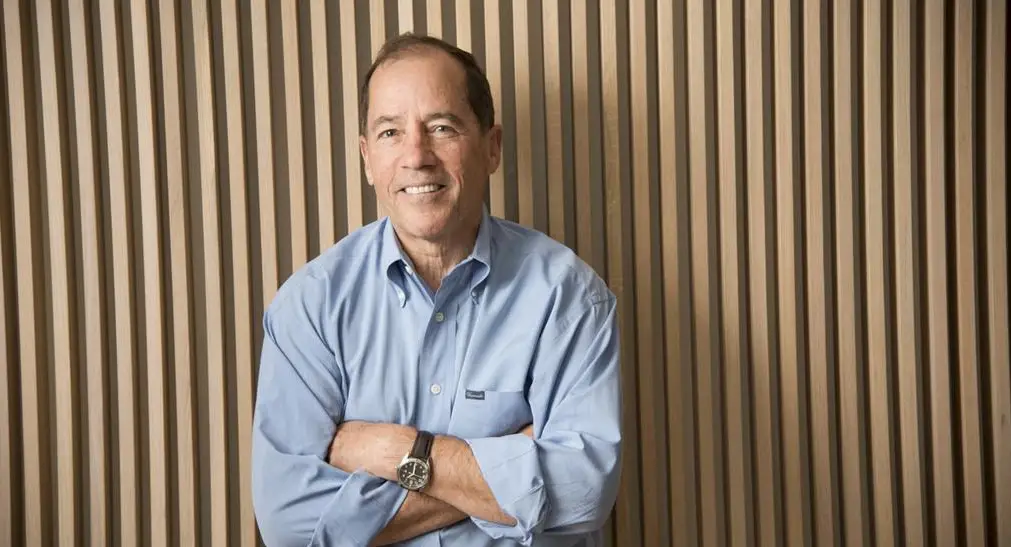
The new CEO also had no background in the automotive industry but got the company’s business in order, including eliminating unnecessary costs for office maintenance and other services.
Marks concentrated on solving one problem: mass production of the Tesla Roadster. In the end, the company missed all deadlines, but finally released the car on March 18, 2008. However, by that time Marks had already left the company and it was headed by Zeeve Drori. Lotus Engineering was producing 12 cars a week and was constantly increasing the number of cars produced.
Finally, in October 2008, Elon Musk took over as CEO of Tesla and immediately laid off 25% of the staff to cut costs for the company.
Tesla Roadster: one more fail and IPO
In May 2009, Tesla Motors faced one more serious problem. About 75% of all Tesla Roadsters sold had to be recalled because customers complained about problems with the car body.
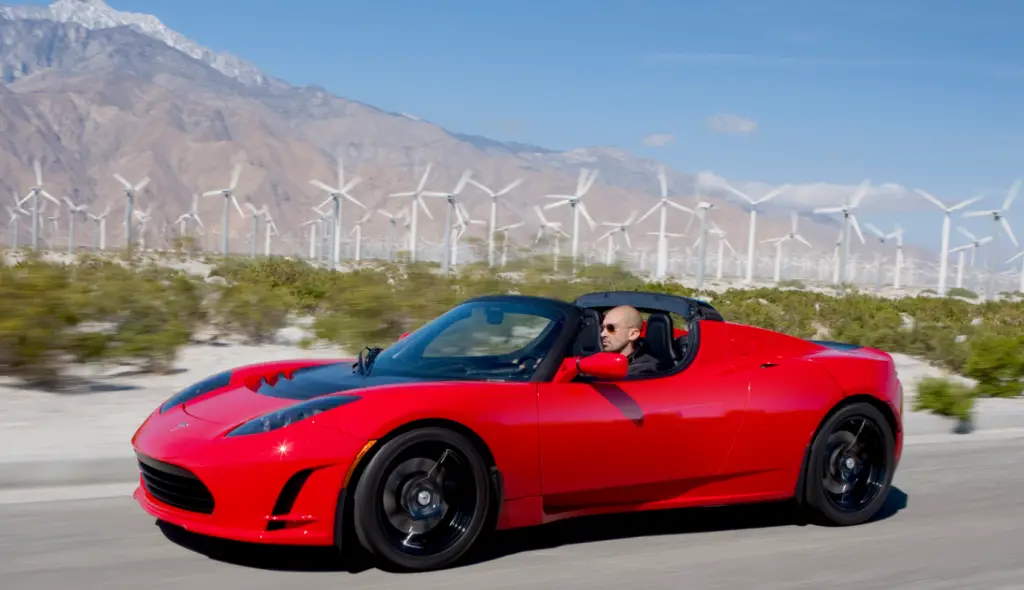
Tesla Motors met this challenge and held an IPO in June, 29 2010 . The company raised $226.1 million. During the first year, the stock rose 41 percent (from $17 to $23.89).
Tesla is the most expensive automobile company now
Of course, in this story I only told about how Tesla Motors went from a startup for dreamers to the most expensive company.
In 2009, the company announced the Tesla Model S. Then Tesla Motors announced the Model X, Model 3, and Model Y, as well as the futuristic CyberTruck.
Looking to the future, the electric car industry has very good prospects. Oil reserves are exhausted and it is obvious that the world is moving toward renewable energy. The only question is whether Tesla will be able to retain the lead and not lose to big automobile companies, that are already entering the race.
No matter what the future holds, the most important thing is that Tesla has become the company that has renewed faith in electric cars and set the existing trend.


